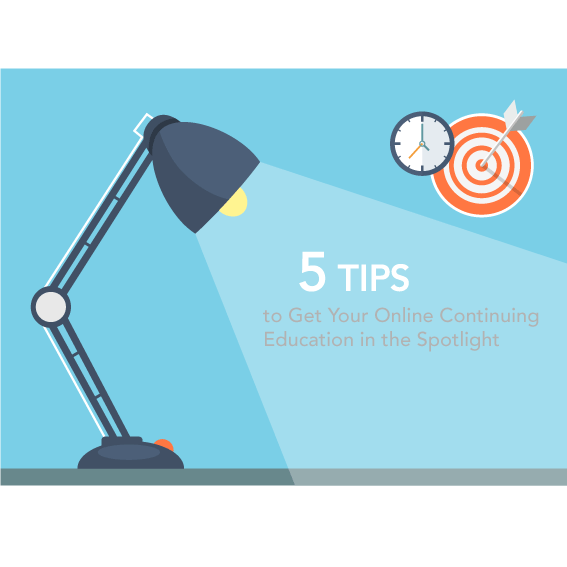“Marketing owns our homepage, so it’s tough to get real estate for our online education.”
“Our membership team owns email communication, and continuing education won’t be included this month.”
“We don’t have budget to advertise our upcoming webinar series, all resources are allocated to next month’s annual conference.”
Do any of these sound familiar within your organization? With the hundreds of continuing education pros we work with, we hear these phrases all too often and it’s time to flip the script. Here are five tips to work with your marketing and membership teams and make sure your education is getting the spotlight it deserves.
1) Speak up.
Education teams are sitting on a treasure trove of content that any marketer should be dying to get their hands on, but are you communicating with each other effectively? Organizational silos, mile long to-do lists and too much jargon may be a few reasons for communication breakdowns. Education pros, do what you do best—educate your internal teams on the programs you’ve created and why. Understand the priorities of your marketing and membership team and put it in their terms. Is your marketing team yearning for content on a hot topic? You probably have an expert already lined up for a seminar, or an on-demand program available for purchase. Summarize that content for your marketing team to use in the next newsletter or blog post, and it can link to your online education catalog to learn more or take a course to satisfy learning requirements.
2) Stop reinventing.
Annual conferences, leadership summits or any type of in-person event your organization hosts should be a collaboration where education, marketing and membership departments can meet objectives. Have a membership renewal goal? Package online learning modules with a membership upgrade. Want to give more people access to the event and make it easier to earn CE credits? Host live webcasts and allow everyone to access tests and certificates online. Need to update online content? Make arrangements to capture the in-person sessions for on-demand programs. You’re already making the investment in the in-person event, but you can get so much more mileage by thinking ahead and repurposing that content online.
3) Share data.
As the education team, you may not use buzzwords like content marketing and demand generation, but that doesn’t mean you aren’t doing them on a daily basis. Are you delivering content to promote your organization’s value proposition and driving learners to register or to buy content? Bingo! This means every time a learner engages with your content you are capturing critical data that your marketing and membership team can use! You can share metrics like demography and geography of visitors that are purchasing your online education. You can share data on how recently they purchased and how often and how much. This type of data can be analyzed to drive renewal campaigns or to send targeted email campaigns. You can identify trends and preferences and exceed member expectations so your organization becomes the go-to resource.
4) Sell value.
This tip re-emphasizes #1 and #3. Selling the value of your content requires you to speak up and understand the priorities of other teams. Don’t just speak in terms of the content you have, but make sure to deliver the data you’ve captured as well. Tap into the strategic vision of your executive team and articulate how the education content you’re delivering not only meets the needs of different departments, but also can help meet the higher-level and long-term goals of the entire organization. Once your colleagues understand how your team supports the larger vision, that webinar series, or on-demand program just got the spotlight it deserves, and getting home page real estate or that newsletter blurb just got a lot easier.
5) Show results.
Take the time to evaluate your progress! By tracking your success (and failures) this will help your team know what tactics work and which ones don’t. You might not always have access to the reporting from other teams, but if you’re doing your own reporting and see a huge spike in online education sales after an email newsletter went out you can share that information with the marketing team. Let others share in the spotlight, even though each department may have different goals and “own” certain things (i.e. the email newsletter, website homepage or annual conference) you are all working towards a central goal of increasing awareness of your organization and selling the value to your members and learners.






